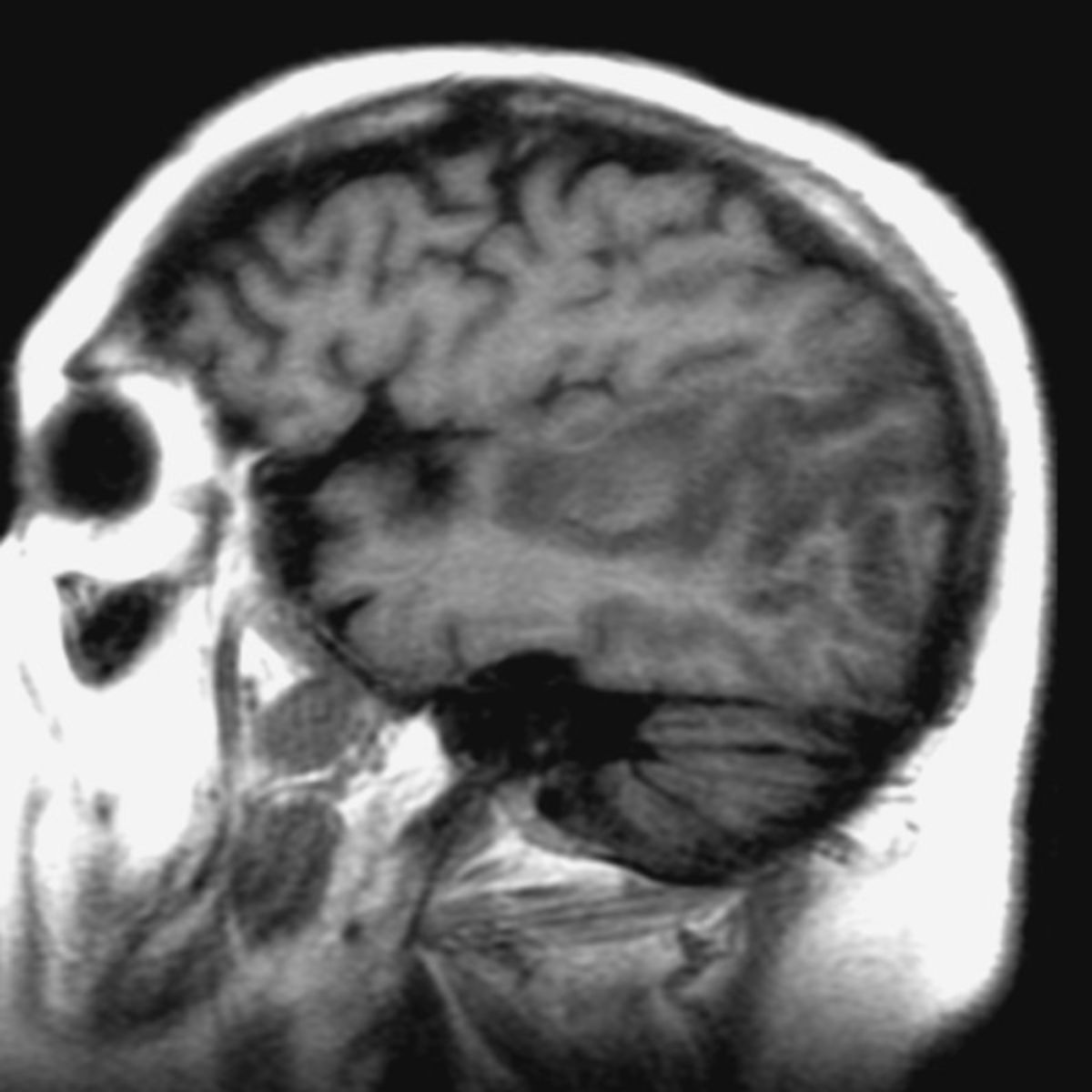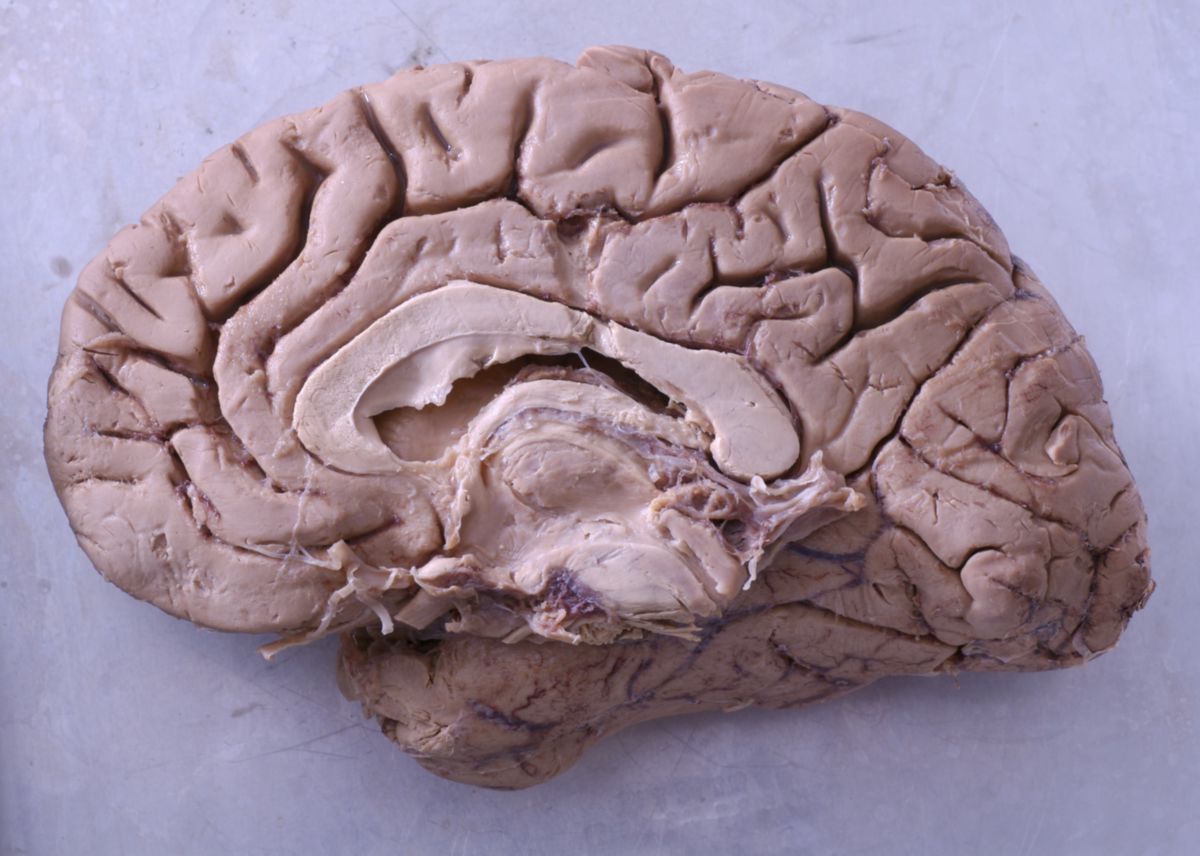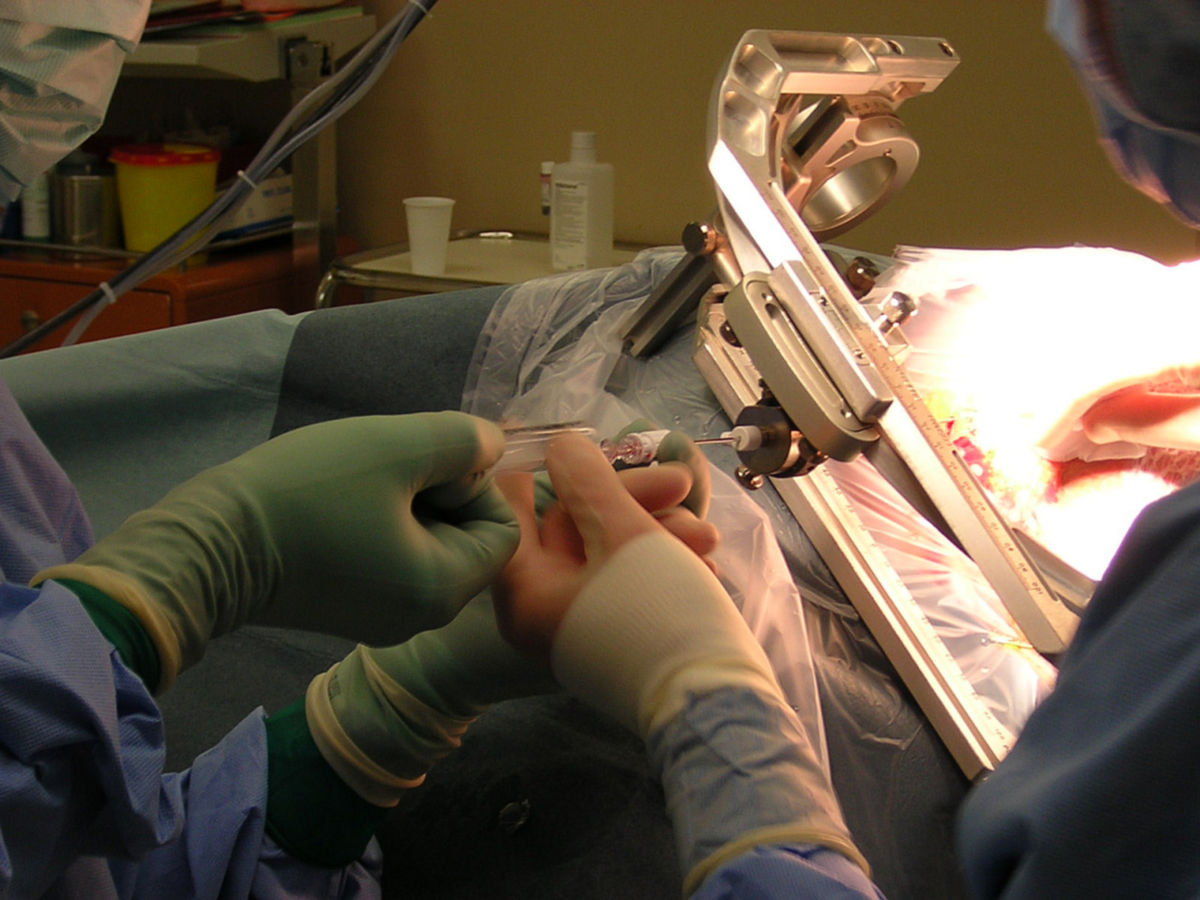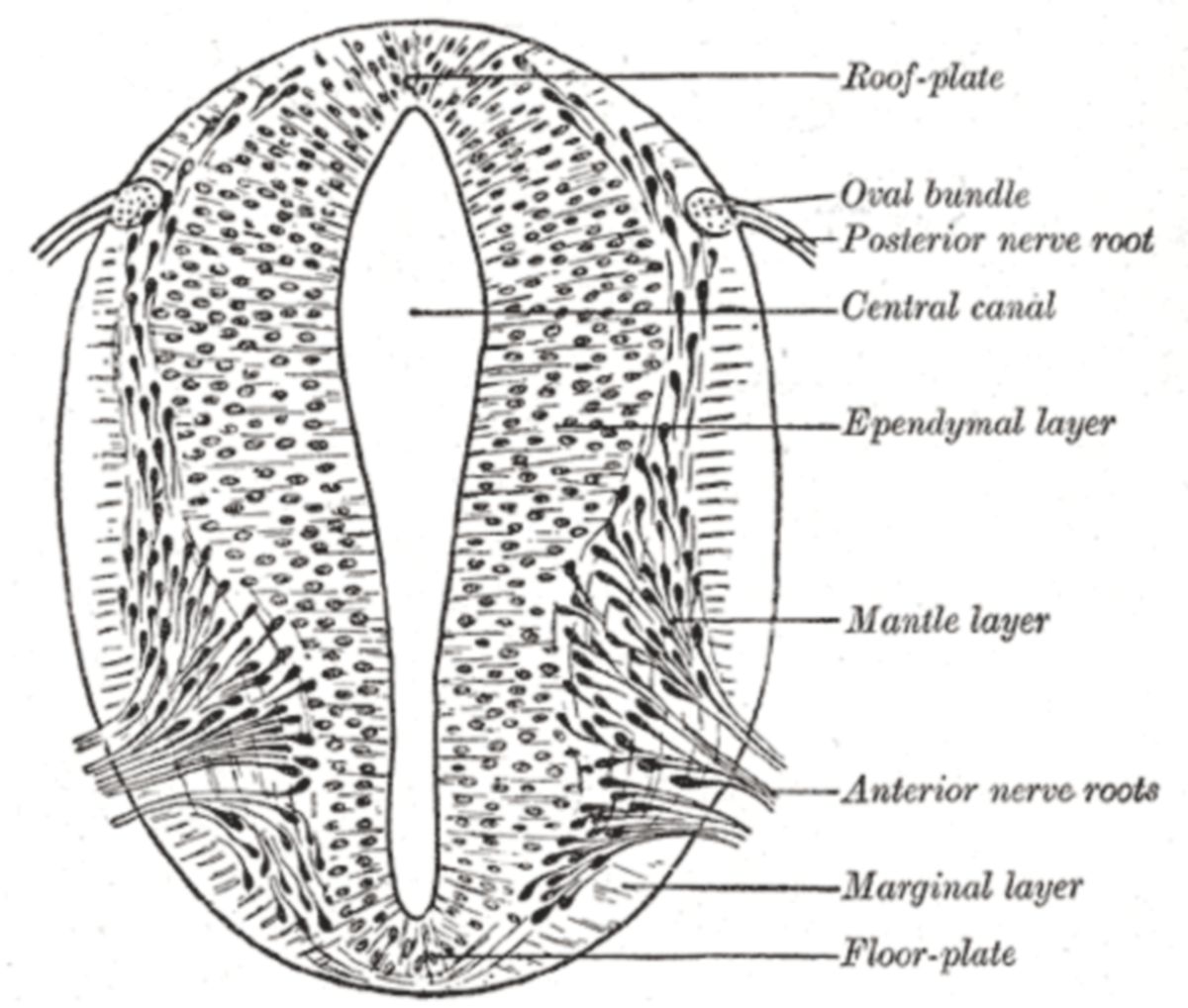Gehirn
Synonyme: Hirn, Cerebrum (lat.), Encephalon (griech.)
Englisch: cerebric, brain
Definition
Als Gehirn bezeichnet man den im Kopf bzw. in der Schädelhöhle gelegenen Teil des zentralen Nervenssystems (ZNS) der Wirbeltiere, der die zentrale Steuerzentrale des Körpers darstellt.
Evolution
Das Wirbeltier-Gehirn verarbeitet hochzentralisiert Sinneswahrnehmungen und koordiniert komplexe Verhaltensweisen. Es ist der Hauptintegrationsort für alle überlebenswichtigen Informationen, die in einem Organismus verarbeitet werden und bildet zusammen mit dem Rückenmark das zentrale Nervensystem.
Neben den Wirbeltieren besitzen beispielsweise auch Tintenfische hochkomplexe Gehirne, die sie zu gezielten Tätigkeiten befähigen. Im weiteren Sinne bezeichnet man daher auch die Zentralstelle des Nervensystems verschiedener wirbelloser Tiere, etwa der Ringelwürmer oder Insekten, als Gehirn. Je nach Gehirn-Typ spricht man hier von Cerebralganglion, Oberschlundganglion etc.
Das menschliche Gehirn ist (neben einfachen Nervensystemen einiger Würmer) das am besten untersuchte Gehirn im Tierreich.
Embryologie
Allgemeine Prinzipien
Die Entwicklung des Gehirns beginn mit der Schließung des Neuralrohrs. Am kranialen Ende des Neuralrohres kommt es zur Ausbildung von drei Hirnbläschen.
Die Wand des Neuralrohres wird von undifferenziertem Neuralepithel gebildet. Die Neuralepithelzellen teilen sich und bilden zwei neue Zelltypen: die primitiven Nervenzellen, die sogenannten Neuroblasten und die Glioblasten (primitive Stützzellen des Neuralrohrs).
Aus den Neuroblasten bilden sich die motorischen Neurone des Vorderhorns sowie die sensiblen Neurone des Hinterhorns.
Fortlaufend kommt es zum Eintritt von Neuroblasten in die Mantelschicht und es kommt zur Ausbildung einer ventralen und einer dorsalen Verdickung: der motorischen Grundplatte und der sensiblen Flügelplatte. Dazwischen findet sich der Sulcus limitans. Dieser stellt Neurone des vegetativen Nervensystems.
Zwischen den beiden Flügelplatten findet sich die Deckplatte, zwischen den beiden Grundplatten die Bodenplatte. Um die Grund- und Flügelplatte herum befindet sich die Marginalzone.
Ist die Bildung der Neuroblasten abgeschlossen, kommt es zur Entwicklung von Glioblasten. Diese wandern in die Mantelschicht ein und differenzieren sich zu protoplasmatischen und fibrillären Astrozyten.
Haben die Neuralepithelzellen aufgehört, Neuroblasten und Glioblasten zu bilden, entwickeln sie sich zu Ependymzellen.
Spezielle Embryologie
Allgemeines
Das Neuralrohr besteht aus dem kranialen Bestandteil mit den Gehirnbläschen und dem kaudalen Anteil.
Aus den Gehirnbläschen entwickeln sich die drei Gehirnanteile: Prosencephalon, Mesencephalon und Rhombencephalon. Aus dem kaudalen Anteil des Neuralrohres entsteht das Rückenmark.
Die Entwicklung der einzelnen Gehirnteile geht immer von Grund- und Flügelplatte, Deckplatte, Bodenplatte und Marginalzone aus. In jedem Abschnitt entlang des Neuralrohres differenzieren sich diese unterschiedlich.
Im Bereich des kaudalen Neuralrohres (Rückenmark) kleidet das Ependym den sich dort bildenden Zentralkanal aus. Im kranialen Neuralrohr (dem Bereich der Gehirnbläschen) wird aus dem Zentralkanal das Ventrikelsystem. Dieses wird entsprechend von Ependymzellen auskleidet, welche den Liquor produzieren.
Prosencephalon
Aus dem Prosencephalon bildet sich das Diencephalon und das Telencephalon. Dies geschieht durch zahlreiche Differenzierungsvorgänge sowie durch die Rotation der Hemisphären: während der Entwicklung dehnt sich die Hemisphärenblase (Gehirnbläschen sind jeweils beidseits angelegt) nicht gleichmäßig nach allen Richtungen aus, sondern erweitert sich vorwiegend in kaudaler und basaler Richtung. So entsteht der Temporallappen. Es kommt zu einer Bewegung nach vorne-oben und hinten-unten.
Mesencephalon
Das Mesencephalon bildet die späteren Crurae cerebri sowie das Tegmentum und das Tectum.
Rhombencephalon
Aus dem Rhombencephalon entstehen das spätere Metencephalon (mit Cerebellum und Pons) und das Myelencephalon (= Medulla oblongata).
Anatomie
Makroanatomie
Das Gehirn des Menschen besitzt von oben betrachtet eine annähernd ovale Grundform. Der Aspekt des Gehirngewebes ist grau-gelblich. Am ungeteilten Gehirn lassen sich äußerlich 3 Abschnitte unterscheiden, das mächtig aufgewölbte Großhirn, das Kleinhirn und das Nachhirn mit dem Übergang zum Rückenmark.
Das Großhirn wird durch eine zentrale Furche (Fissura longitudinalis) in zwei gleich große Hälften, die Hemisphären geteilt. Auf der Oberfläche des Großhirns stellen sich die Hirnwindungen (Gyri cerebri) und die dazwischen liegenden Hirnfurchen (Sulci cerebri) dar. Sie bilden ein charakteristisches Relief. In den Gyri und Sulci liegen die verschiedenen Zentren des Gehirns, wie z.B. die Hörrinde im Temporallappen oder die Sehrinde im Okzipitallappen.
Das durchschnittliche Organgewicht liegt zwischen 1.300 und 1.600 Gramm.
Hirnteile
- Prosencephalon (Vorderhirn)
- Telencephalon (Endhirn)
- Diencephalon (Zwischenhirn)
- Mesencephalon (Mittelhirn)
- Rhombencephalon (Rautenhirn)
- Metencephalon (Hinterhirn)
- Cerebellum (Kleinhirn)
- Pons
- Myelencephalon (Nachhirn)
- Metencephalon (Hinterhirn)
- (Rückenmark)
Medulla oblongata, Pons und Mesencephalon werden als Hirnstamm (Truncus encephali) zusammengefasst.
Mikroanatomie
Jeder der Abschnitte des Gehirns, welcher aus den jeweiligen Hirnbläschen entsteht, besitzt einen eigenständigen Aufbau.
Da jedoch die Großhirnrinde den volumenmäßigen größten Anteil des Gehirns ausmacht, werden hier zwei besondere strukturelle Einteilungen hervorgehoben: der Isocortex und der Allocortex.
Dabei handelt es sich nicht um abgegrenzte Hirnareale, sondern um Einteilungen des Aufbaus innerhalb der Großhirnrinde.
Histologie
Physiologie
Zerebraler Blutfluss
Der zerebrale Blutfluss ist die Grundlage für die Sauerstoff- und Nährstoffversorgung der Nervenzellen des Gehirns. Beim gesunden Erwachsenen durchströmen ca. 15% des Herzzeitvolumens das Gehirn und sein umgebendes Gewebe - das entspricht etwa 700 ml Blut pro Minute.
Zerebraler Stoffwechsel
Das Gehirn verwendet für seinen Stoffwechsel unter Normalbedingungen fast ausschließlich Glucose und Sauerstoff. Bei hoher Plasmakonzentration von Ketonkörpern (Fasten, Ketoazidose) können auch diese für die Energiegewinnung herangezogen werden, allerdings limitiert auf etwa 50% des Energiebedarfs.
Hirnfunktionen
Nicht alle Information gelangen bis zur Hirnrinde und damit zum Bewusstsein. Peripher liegende Nervengeflechte (Plexus) und vor allem Zentren im Hirnstamm dienen der unbewussten Vorverarbeitung von Signalen, Reflexbögen übernehmen Aufgaben, die mit höchster Geschwindigkeit und ohne bewusste Registrierung ablaufen müssen. Auch beim Menschen findet sich ein so genanntes autonomes Nervensystem, das der Koordination vegetativer Funktionen (Atmung, Kreislauf, Nahrungsaufnahme, Verdauung und Abgabe, Flüssigkeitsaufnahme und Ausscheidung, sowie der Fortpflanzung) dient. Die Regulation all dieser Prozesse würde diejenigen Strukturen des Gehirns, die mit der bewussten Wahrnehmung beschäftigt sind, vollständig überfordern und damit blockieren.
Die Struktur und - in geringerem Maß - die Größe des Gehirns können als Anhaltspunkt für die Lernfähigkeit und Intelligenz eines Tieres genommen werden. Wiederum ist nicht das Gehirn alleine zu Lernleistungen in der Lage, neuronale Plastizität findet sich auf so gut wie allen Hierarchiestufen des Nervensystems.
Geschichte der Hirnforschung
- Ägypten: "Lehrbuch der Chirurgie" mit Beschreibung der Gehirnfurchung, Erkennen von Gehirnverletzungen (abweichende Augenstellung, Nachziehen eines Fußes, Sprachverlust)
- Hippokrates: Epilepsie durch Reize auslösbar
- Galen: erste neurophysiologische Experimente (Schnitte, Läsionen)
- Andreas Vesalius: Gehirnanatomie
- Descartes: Zweiteilung von Körper und Seele
- Thomas Willis: graue/weiße Substanz
- Gall: Phrenologie (Schädelkartierung)
- Paul Broca: lokalisiert motorisches Sprachzentrum im linken Frontallappen
- Wernicke: lokalisiert sensorisches Sprachzentrum im linken Temporallappen
- Brodmann: Einteilung der Großhirnrinde in 52 Areale
- Santiago Felipe Ramón y Cajal: Neuronentheorie













